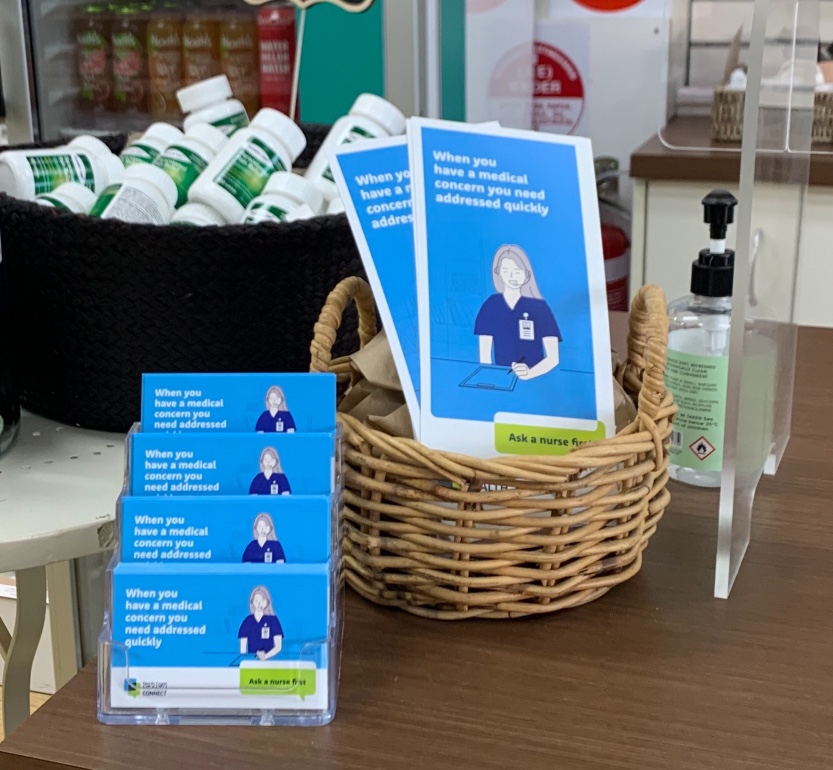In an Australian-first project, PSA has joined forces with the North Coast’s PHN, Healthy North Coast, alongside Amplar Health and The George Institute to ensure the community can access the right healthcare services at the right time.
The ‘Healthy North Coast’ region of NSW spans the east coast from Port Macquarie to the Queensland border.
With the health system under increasing pressure, PSA’s partnership with Healthy North Coast allows residents to receive expert advice from a community pharmacist through the North Coast Health Connect program.
PSA’s NSW President Luke Kelly FPS said the inclusion of pharmacists in North Coast Health Connect leverages the maximum capacity of the health system.
‘In regional areas like the North Coast of NSW, we need to utilise all healthcare professionals to the top of scope to ensure all patients can access the care they need,’ he said.
‘North Coast Health Connect is playing an important role in triaging patients and taking pressure off our hospitals and broader health system. We’re thankful that pharmacists are part of accessible regional healthcare.’
Pharmacists have an important role in supporting patients with non-urgent healthcare needs, said PSA National President Dr Fei Sim FPS.
‘Services like North Coast Health Connect that connect patients with an appropriate healthcare profession – whether a GP, pharmacist, or another health professional – are vital to ensuring our health system efficiently utilises all resources,’ she said.
‘This program is providing a model of care for other regions around Australia.’
How it works
As an integrated part of the primary healthcare system, pharmacists are managing low-urgency conditions to prevent patients from unnecessarily presenting to emergency departments (ED), said PSA Project Manager Chris Braithwaite, who is leading the pharmacy arm of the project.

‘By having a one-on-one consultation with patients, pharmacists are helping community members access the right part of the health system at the right time,’ he said.
Pharmacies participating in North Coast Health Connect are also receiving remuneration both for participating in the service and for each consultation.
‘The conditions pharmacists are treating are within pharmacists’ scope of practice to manage, the difference being that pharmacists are referred to and remunerated for the service,’ Mr Braithwaite told Australian Pharmacist.
The overall project is delivered by health services business Amplar Health, delivering around-the-clock nurse triage directing patients to different parts of the healthcare system.
For emergency issues, patients are directed to the ED. In less urgent situations, an integrated booking tool connects patients with a GP, or schedules an appointment to see a community pharmacist.
 Patients referred to pharmacists for treatment include those with respiratory conditions such as coughs and common colds, dermatological issues including dermatitis or fungal infections, and gastrointestinal problems such as constipation or diarrhoea. Other ailments may include mild to moderate pain such as headache, or strains and sprains.
Patients referred to pharmacists for treatment include those with respiratory conditions such as coughs and common colds, dermatological issues including dermatitis or fungal infections, and gastrointestinal problems such as constipation or diarrhoea. Other ailments may include mild to moderate pain such as headache, or strains and sprains.
Consultation process
Once community pharmacy has been established as the appropriate level of care, a booking is made by the triage nurse. A notification informs the patient and a participating pharmacy that they have an appointment.
‘This will integrate with any other bookings the [pharmacy] has, such as a vaccination service, so there’s no duplications,’ Mr Brathwaite added.
When presenting to the pharmacy, the patient will go into a private room for a consultation with the pharmacist.
A clinical assessment will inform the pharmacist’s decision to refer on, if symptoms have worsened since the triage call, or to treat the patient.
‘The pharmacist will then provide pharmacological management for non-prescription medicines, self-care advice, standard documentation and follow up, as well as consumer information such as a PSA Self Care Fact Card,’ said Mr Braithwaite.
‘By having a one-on-one consultation with patients, pharmacists are helping community members access the right part of the health system at the right time.’
Chris Braithwaite
Let’s say a patient is referred to a pharmacy with symptoms of oral thrush, for example, which have worsened in the last few days.
The patient’s symptoms include a white coating on the tongue and a sore mouth, particularly when swallowing food, but their gums are not bleeding and there are no mouth ulcers present.
‘[The patient] has asthma, and recently started on preventative inhalers twice a day, as well as salbutamol,’ said Mr Braithwaite.
When asked about inhaler technique, the patient disclosed they forget to rinse their mouth after using the inhaler and a spacer is not used.
After ruling out any red flags requiring referral, such as immunocompromise, the pharmacist explains the correct inhaler technique, including the importance of rinsing the mouth after using inhaled corticosteroids.
‘[Other] advice includes staying hydrated, and correct oral hygiene through regular teeth brushing, flossing and not sharing toothbrushes,’ he said. ‘Pharmacists also recommend a particular non-prescription product to treat [if required].’
‘This is a fantastic example of a common ailment within a pharmacist’s scope of practice, directed to the appropriate level of care, taking pressure away from other areas of the health system.’
‘Fantastic and innovative’ service
Echoing Dr Sim, Mr Brathwaite hopes this ‘fantastic and innovative’ service will expand across the nation. For now, however, he’s focussed on making it work on the North Coast.
‘We’re working to optimise the role of community pharmacy in primary care in our region and look forward to seeing the impact pharmacists can make,’ he added.



 Professor Margie Danchin[/caption]
Professor Margie Danchin[/caption]

 Dr Peter Tenni[/caption]
Dr Peter Tenni[/caption]
 How should we deprescribe gabapentinoids, according to the Maudsley Deprescribing Guidelines[/caption]
How should we deprescribe gabapentinoids, according to the Maudsley Deprescribing Guidelines[/caption]



 Pharmacists have always prescribed, but they have the potential to prescribe much more
Pharmacists have always prescribed, but they have the potential to prescribe much more




